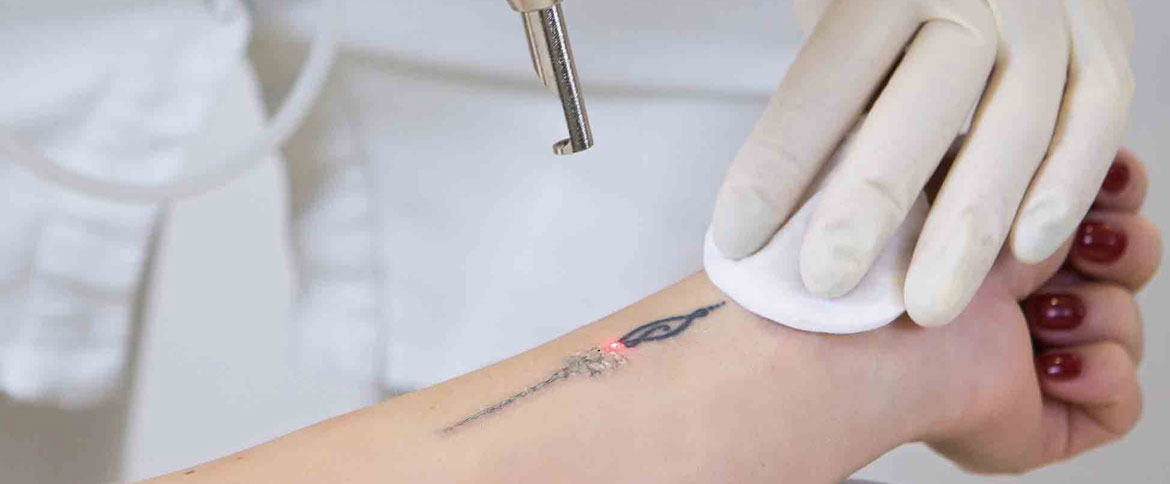Laser Tattoo Removal

Laser tattoo removal is a cosmetic procedure used to remove unwanted tattoos from the skin. It involves using specialized laser technology to break down the ink particles in the tattoo, allowing the body's natural processes to gradually eliminate the ink over time. Laser tattoo removal is considered one of the most effective methods for getting rid of tattoos, but it requires multiple sessions and can be a lengthy process depending on various factors.
Here's how the laser tattoo removal process typically works:
- Consultation: Before undergoing laser tattoo removal, you will have a consultation with a trained professional, such as a dermatologist or a licensed laser technician. During this consultation, they will assess your tattoo, discuss your medical history, and determine if you are a suitable candidate for the procedure.
- Procedure: During the treatment, you will be given protective eyewear, and the laser device will be used to deliver short pulses of intense light energy to the tattooed area. The laser energy is selectively absorbed by the tattoo ink, causing it to break into smaller fragments.
- Sensation: Laser tattoo removal can be uncomfortable, with many people describing the sensation as similar to the feeling of a rubber band snapping against the skin or hot specks of bacon grease. The level of discomfort can vary depending on factors such as the location of the tattoo, the colors used, and individual pain tolerance. Some clinics may offer numbing creams or local anesthesia to help manage the discomfort.
- Multiple Sessions: Complete tattoo removal typically requires multiple treatment sessions, spaced several weeks apart. The number of sessions needed depends on various factors, including the size, color, depth, and age of the tattoo, as well as individual factors like skin type and the body's ability to clear the ink.
- Aftercare: After each session, you may experience redness, swelling, and blistering in the treated area, which is a normal part of the healing process. It's essential to follow the aftercare instructions provided by your provider to help the skin heal properly and reduce the risk of complications.


